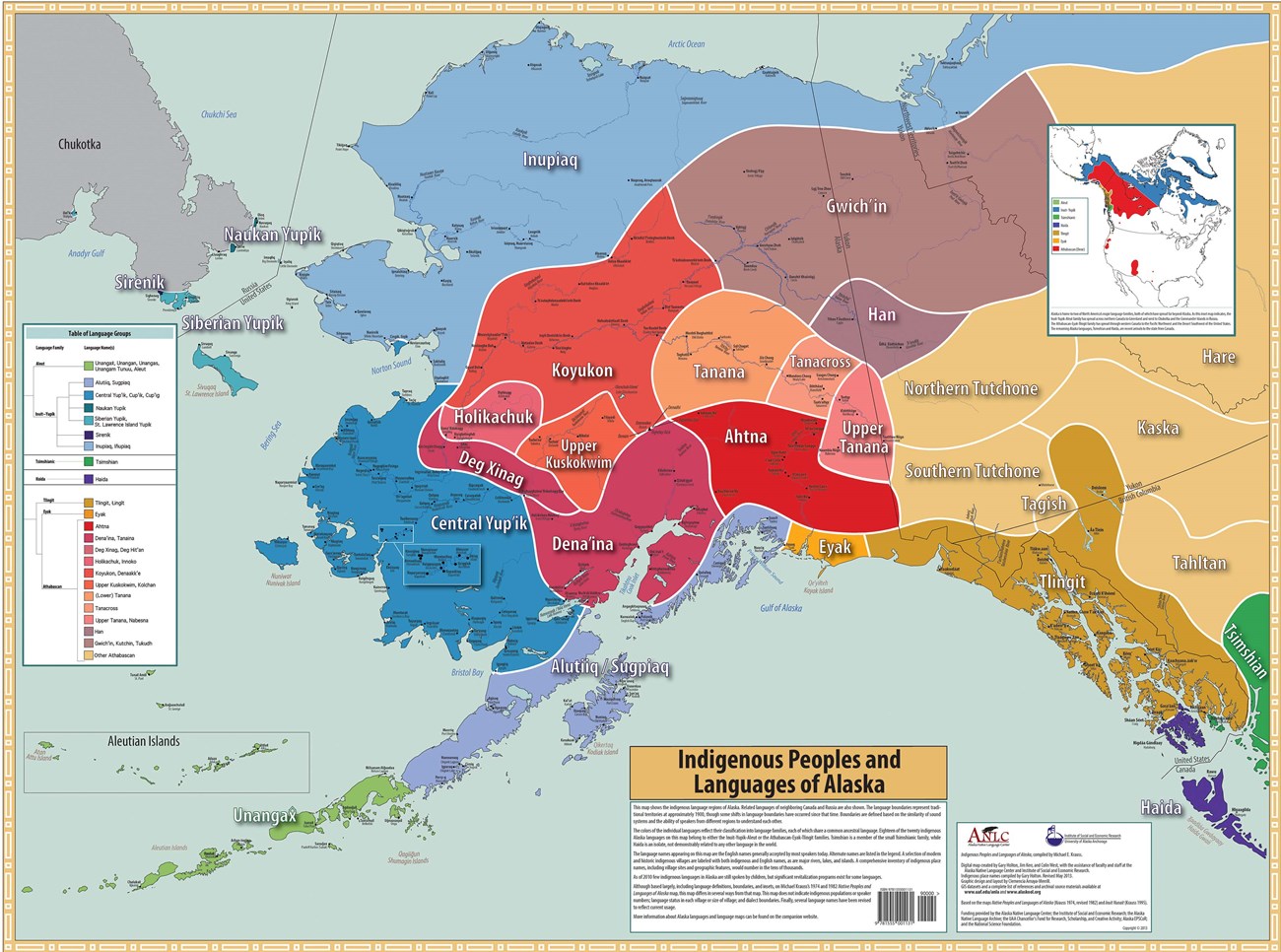Last updated: November 1, 2021
Article
Indigenous Languages of Alaska: Iñupiaq
"Language is the soul of the People." - Wolf A. Seiler, Inupiatun Eskimo Dictionary
Present-day Alaska is home to diverse groups of Indigenous people, each with their own traditions, oral histories, ways of life, knowledge, and languages. The Indigenous People of Alaska are collectively referred to as Alaska Natives. There are several Indigenous cultural groups in what is now known as Alaska. Northwest Alaska is home to the Inupiat People and their traditional homeland spans from Norton Sound to the northeast boundary of Alaska and Canada. The language spoken by the Iñupiat People is Iñupiaq or Iñupiatun.

Courtesy of the Alaska Native Language Center
There are at least twenty distinct indigenous languages in Alaska. Iñupiaq is one of them.
Many of the languages in Alaska are related to each other and can be grouped into broad language families. Language families are created based on similarities found between languages, this could include sounds (phonemes), vocabulary, grammar, sentence structure, and more. Anthropologists and linguists place Iñupiaq in the language family called “Inuit-Yupik- Unangax̂.”
Within the Inuit-Yupik- Unangax̂ family, there are two branches: the Unangax and the Inuit-Yupik. Iñupiaq is a leaf on the Inuit-Yupik branch and it is related to all other Inuit languages along that same branch.
Iñupiaq is part of a spectrum or dialect chain of other Inuit languages in the Arctic—languages that are geographic neighbors have more similarities than those languages that are farther apart. The Inuit-speaking world covers a vast stretch of land from Alaska, to Canada, to Greenland.
Inuit languages across Alaska, Canada, and Greenland.
Alaska: Iñupiatun
Canada: Inuvialuktun, Inuttut, and Inuktitut
Greenland: Kalaaâisut
The languages in the Inuit-Yupik- Unangax̂ most likely stem from a common ancestor language or proto-language. A feature of this language family, including Iñupiaq, is the formation of words with a root word and the addition of suffixes. Iñupiaq is what linguistics call a polysynthetic language, meaning words are combined with suffixes, post bases, and verb endings. A lot of information can be shared with one word; a sentence can be represented with one word.
Take a look at some examples.
Nigirraqsiruq
She / he / it is begining to eat.|
niġi |
rraqsi |
ruq |
|
to eat |
to begin |
he/she/it (3rd person plural) |
Iñupiaq
Real or genuine person
| Inuk | piaq |
| person | real or genuine |
Inupiuraaq, To Speak Iñupiaq
Presently, there are about 13,500 Iñupiat People in Alaska with approximately 3,000 speakers, most of whom are over the age of 40. There have been tremendous efforts to sustain the Iñupiaq language and to pass on the language to children. Iñupiaq classes are taught in colleges, communities, schools, online, and even in immersive pre-kindergarten classes.
Want to learn more about? Check out Ilisaqativut - Those Who Learn Together Inupiaq language page.
